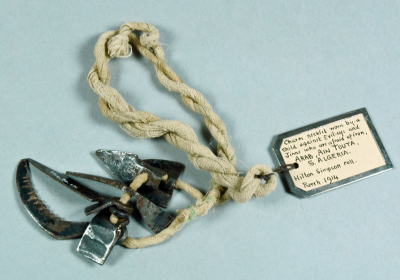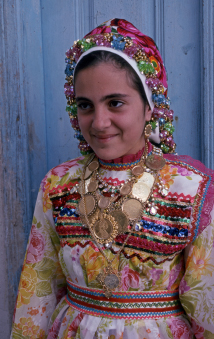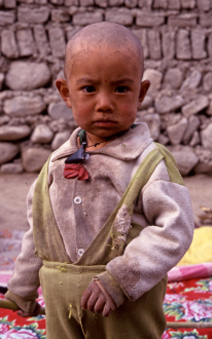Amulet Trail: Child's amulet, Algeria
 PRM 1914.76.101
PRM 1914.76.101
This amulet from Algeria consists of seven miniature iron tools threaded on to a strip of cotton and worn by children as protection against the Evil Eye. The label also says the iron is important because the 'jinns' - mischievous genies in Arab folklore - are afraid of it. Iron is not the only defence however; the porcupine is, like all animals that make their homes underground where the spirits dwell, a servant of the jinn and the hyena is believed to be the actual physical incarnation of a jinn. Therefore a porcupine quill or the anus of a hyena are also bellieved to be effective amulets against jinns.
Across the world there are long traditions of children wearing special ornaments or clothes for protection because they are especially vulnerable to illness and evil influences. Boys in particular are considered precious in many cultures and at greater risk. In Albania, for example, boys might be dressed as girls so the jinn will not bother them. Elsewhere, such as Olymbos village on the island of Karpathos in Greece, matriarchal societies place greater importance on the oldest daughter, adorning her in amulets and gold coins representing the family's wealth.


Left: Girl at easter wearing wealth as coins, Karpathos, Greece (Sheila Paine)
Right: Uighur boy with herbs in a neck amulet and a red rag. Tashkurgan, China (Sheila Paine)






